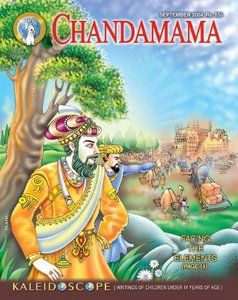

Taking pride in your culture and heritage does not mean you have to be a fanatic. I found that those messages are as relevant to children today as they were 60 years ago. It is not the label rather the message that they drive that is important. We have a treasure trove of literature and mythological stories like Jataka and Panchatantra tales. That I think is a shame, not that I have anything against western classics. I would dare say they are more comfortable with western classics than Indian classics. If you ask them, who are the superheroes they associate themselves with, normally you would hear Superman or Batman. Today, children are growing up in a climate of exigency, always worried over getting a certain work done. Can you elaborate on that?Ĭhandamama messaging during the last 60 years largely focused on the fact that there are a certain set of values that you live with and characters you draw inspiration from. You mentioned a difference in the kind of message that is transmitted in the other children magazines. At both levels - in serving the market and children, it holds huge potential value. From the marketing perspective we had a great brand called Chandamama and here I get an opportunity to build the brand all over again and make it relevant for 21st century India. In the first 100 days that I have been here, I have stumbled across far more information and insight than I had expected to find. This was a good platform to reach out to children and something I felt good about being associated with, after having put in 15-20 years in IT journalism. In that sense, this is a legacy and one that provided an opportunity to rebuild a set of values for the current As a child, I grew up on Chandamama and so did my parents.

The last decade saw it run into rough weather. What value did you see in a magazine like Chandamama that had a successful innings as a children’s magazine in the 70’s and 80’s but lost substantial brand equity?


 0 kommentar(er)
0 kommentar(er)
